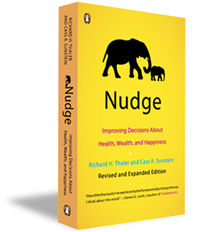all have bad days. We may feel tired or depressed or anxious or unmotivated. It happens. That’s life. But when medical providers have a bad day, it can lead to errors that can cause harm.
I am fascinated by how we make decisions as humans. A lot goes into how we draw certain conclusions, and emotional judgement plays a role in nearly everything that we do. To ensure that our assessments are not clouded inappropriately, we need to make sure that we consciously regulate our thinking and actions.
I have written before about the use of intuition (system 1 thinking) and slow, deliberate thinking (system 2) in decision-making. The role of emotion in making decisions adds both positive and negative complexity.
Emotion-based decisions can contribute to:
- better interpersonal connections
- increased satisfaction with our decisions and choices
- a more deferential and compassionate approach to others
On the other hand, emotion-based decisions can also contribute to:
- more focus on your own desires to the exclusion of others
- projecting certain values and beliefs onto others (like in our current political climate)
- less concern about the consequences of our actions

Nobel prize-winning economist Richard Thaler and Cass Sustein's revelatory look at how we make decisions.
Even as a physician, mood and behavior affect me. Both my mood and my patients’ moods impact my decisions. The concept of counter-transference, or an emotional reaction by the provider to the patient, is a real thing and can potentially cause significant damage.
Richard Thaler won the 2017 Nobel Prize in Economics for his work in behavioral economics. One of his biggest contributions to the field was his finding that our irrational, emotional decisions often follow predictable patterns. Nudges, as he called them, can be used to encourage better decisions without removing anyone’s individual agency. For example, using an employer’s default retirement savings program to maximize the amount of financial preparation for retirement.
So then, how can we nudge doctors into better decision-making? The answers are not new or unique. Shared decision-making with patients, though often time-consuming, creates a checks-and-balances approach between patient and doctor to achieve a shared solution. Team-based care, where multiple disciplines are involved in the care of the patient, also provides a check on our actions. Many providers wince at the use of diagnostic and treatment protocol use, but they improve quality and standardize care.
While no one likes their decisions impugned, nudges can ensure that we are taking proper care of our patients without overusing emotion in our judgements.
This article was first published November 28, 2018.
Kyle Bradford Jones
Patient Experience Program Coordinator Corrie Harris and Project Administrator Shayma Salih explain how to get valuable patient feedback early in your improvement efforts by meeting with the U of U Health Patient Design Studio and Advise Utah.
Four years ago, U of U Health established the Patient Design Studio—a monthly meeting where patients give feedback to frontline teams generating system improvements. Four years of deep listening and feedback reveal three insights applicable to anyone looking to make their care more patient-centered.
Palliative care teams focus on treating the symptoms and stress of serious illness. Nate Wanner, Associate Medical Director of U of U Health’s Palliative Care Program, discusses how palliative care not only improves the quality of a patient’s life, but supports other clinical teams in one of the most challenging (and rewarding) parts of caring for people: having hard conversations.
